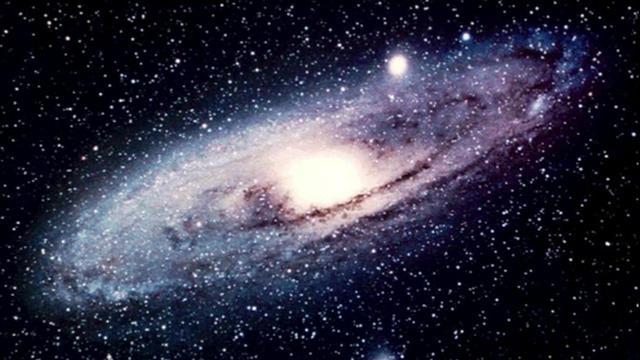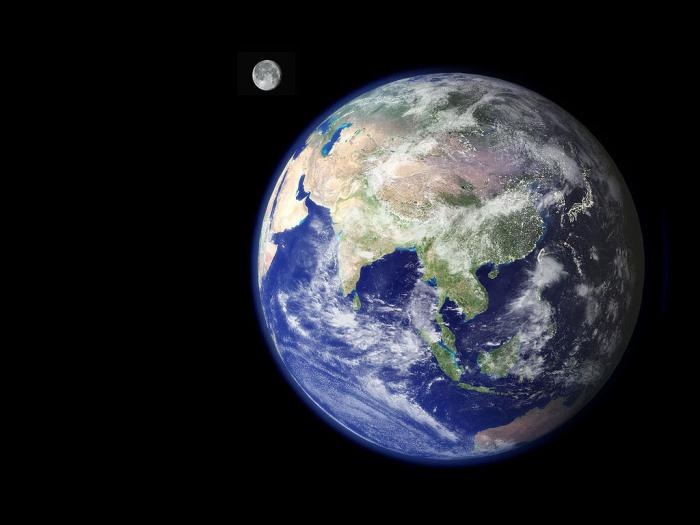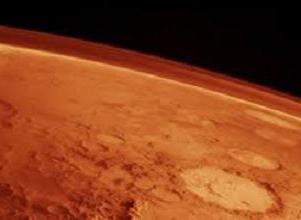Planets of the solar system in order. Planet Earth, Jupiter, Mars
For a long time people's attention has been attracted by space. The planets of the solar system, astronomers began to study in the Middle Ages, considering them in primitive telescopes. But a thorough classification, description of the features of the structure and motion of celestial bodies became possible only in the 20th century. With the advent of powerful equipment equipped with the latest technology of observatories and spacecraft, several previously unknown objects were discovered. Now every schoolboy can list all the planets of the solar system in order. Almost all of them dropped a space probe, and a man so far only visited the moon.

What is the Solar System?
The universe is huge and includes manygalaxies. Our solar system is part of the Milky Way galaxy, which has more than 100 billion stars. But very few are like the Sun. Basically all of them are red dwarfs, which are smaller in size, and shine less brightly. Scientists have suggested that the solar system was formed after the appearance of the Sun. Its huge field of attraction captured a gas-dust cloud, from which as a result of gradual cooling formed particles of a solid. Over time, celestial bodies were formed from them. It is believed that the Sun is now in the middle of its life path, so it will exist, as well as all the celestial bodies dependent on it, for several billions of years. Astronomers have studied the near space for a long time, and any person knows what planets of the solar system exist. Photos of them, made from space satellites, can be found on the pages of various information resources devoted to this topic. All celestial bodies are held by a strong field of attraction of the Sun, which is more than 99% of the volume of the solar system. Large celestial bodies revolve around the star and around its axis in one direction and in one plane, which is called the plane of the ecliptic.

Planets of the Solar System in order
In modern astronomy it is considered to be heavenlybody, starting from the Sun. In the 20th century, a classification was made, which includes 9 planets of the solar system. But recent space exploration and new discoveries have prompted scientists to review many provisions in astronomy. And in 2006, at an international congress, because of its small size (dwarf, in diameter not exceeding three thousand kilometers), Pluto was excluded from the number of classical planets, and there were eight of them. Now the structure of our solar system has assumed a symmetrical, slender appearance. It includes the four planets of the terrestrial group: Mercury, Venus, Earth and Mars, then the asteroid belt, followed by the four giant planets: Jupiter, Saturn, Uranus and Neptune. On the outskirts of the solar system, too, passes the asteroid belt, which the scientists called the Kuiper belt. It is in it that Pluto is located. These places are still poorly understood due to their remoteness from the Sun.

Features of the terrestrial planets
What makes it possible to classify these heavenly bodies as one group? We list the main characteristics of inner planets:
- relatively small size;
- solid surface, high density and similar composition (oxygen, silicon, aluminum, iron, magnesium and other heavy elements);
- presence of atmosphere;
- the same structure: a core of iron with nickel impurities, a mantle consisting of silicates, and a bark of silicate rocks (except Mercury - it does not have bark);
- a small number of satellites - only 3 for four planets;
- a rather weak magnetic field.

Features of giant planets
As for the outer planets, or gas giants, they have such similar characteristics:
- large sizes and weights;
- they do not have a solid surface and consist of gases, mainly helium and hydrogen (therefore they are also called gas giants);
- a liquid core consisting of metallic hydrogen;
- high speed of rotation;
- a strong magnetic field, which explains the unusual nature of many processes occurring on them;
- in this group of 98 satellites, most of which belong to Jupiter;
- The most characteristic feature of gas giants is the presence of rings. They are present in all four planets, though not always noticeable.

The first planet - Mercury
It is located closest to the Sun. Therefore, from its surface, the luminary looks three times larger than from the Earth. This also explains the strong temperature drops: from -180 to +430 degrees. Mercury moves very fast in orbit. Maybe that's why he got that name, because in Greek mythology Mercury is a messenger of the gods. There is practically no atmosphere here, and the sky is always black, but the sun shines very brightly. However, there are places on the poles where its rays never reach. This phenomenon can be explained by the inclination of the axis of rotation. Water on the surface was not found. This circumstance, as well as the abnormally high daytime temperature (as well as the low nighttime temperature), fully explain the absence of life on the planet.

Venus
If we study the planets of the solar system byorder, then the second account is Venus. Its people could see in the sky in ancient times, but, since it was shown only in the morning and in the evening, it was believed that these are 2 different objects. By the way, our ancestors-Slavs called it Merzany. This is the third brightest object in our solar system. Previously, people called it the morning and evening star, because it is best seen before sunrise and sunset. Venus and Earth are very similar in structure, composition, size and gravity. Around its axis, this planet moves very slowly, making a full turn for 243.02 terrestrial days. Of course, the conditions on Venus are very different from terrestrial. It is two times closer to the Sun, so it's very hot there. The high temperature is also due to the fact that thick clouds of sulfuric acid and an atmosphere of carbon dioxide create a greenhouse effect on the planet. In addition, the pressure at the surface is more than 95 times on the Earth. Therefore, the first ship that visited Venus in the 70s of the 20th century, stood there no more than an hour. The peculiarity of the planet is also that it rotates in the opposite direction, in comparison with most planets. More to astronomers about this heavenly object while it is known nothing.

The third planet from the Sun
The only place in the solar system, and into all known astronomers of the Universe, where there is life, is the planet Earth. In the terrestrial group, it has the largest dimensions. What are its distinctive features?
- The greatest gravity among the planets of the terrestrial group.
- Very strong magnetic field.
- High density.
- It is the only planet among all that has a hydrosphere, which has contributed to the formation of life.
- It has the largest, in comparison with its size, satellite, which stabilizes its inclination relative to the Sun and affects natural processes.

The planet Mars
This is one of the smallest planets of our planet.The galaxies. If we consider the planets of the solar system in order, then Mars is the fourth from the Sun. The atmosphere is very sparse, and the pressure on the surface is almost 200 times less than on the Earth. For the same reason, very strong temperature changes are observed. The planet Mars has been little studied, although it has long attracted people's attention. According to scientists, this is the only heavenly body on which life could exist. After all, in the past there was water on the surface of the planet. This conclusion can be drawn on the basis that there are large ice caps at the poles, and the surface is covered with a multitude of furrows that could be dried up river beds. In addition, there are some minerals on Mars, the formation of which is possible only in the presence of water. Another feature of the fourth planet is the presence of two satellites. Their singularity is that Phobos gradually slows down its rotation and approaches the planet, and Deimos, on the contrary, moves away.

What is Jupiter famous for?
The fifth largest planet is the largest. The volume of Jupiter would be 1300 Earth, and its mass is 317 times greater than terrestrial. Like all gas giants, its structure is hydrogen-helium, reminiscent of the composition of stars. Jupiter is the most interesting planet, which has many characteristic features:
- this is the third brightest celestial body after the Moon and Venus;
- on Jupiter the strongest magnetic field among all the planets;
- a complete revolution around the axis, he does in just 10 terrestrial hours - faster than other planets;
- An interesting feature of Jupiter is a large red spot - so is seen from the Earth an atmospheric vortex rotating counter-clockwise;
- like all giant planets, it has rings, though not as bright as those of Saturn;
- this planet has the largest large number of satellites. They have 63. The most famous are Europe, where water was found, Ganymede is the largest companion of the planet Jupiter, and also Io and Calisto;
- another feature of the planet is that in the shade the surface temperature is higher than in places illuminated by the Sun.

Planet Saturn
This is the second largest gas giant, alsonamed after the ancient god. It consists of hydrogen and helium, but traces of methane, ammonia and water were found on its surface. Scientists have found out that Saturn is the thinnest planet. Its density is less than that of water. This gas giant rotates very quickly - one revolution per 10 Earth clock, as a result of which the planet is flattened from the sides. Huge speeds on Saturn and the wind - up to 2000 kilometers per hour. This is more than the speed of sound. Saturn has one more distinctive feature: it holds 60 satellites in the field of its attraction. The largest of them - Titan - is the second largest in the entire solar system. The uniqueness of this object is that, by examining its surface, scientists first discovered a celestial body with conditions similar to those that existed on Earth about 4 billion years ago. But the most important feature of Saturn is the presence of bright rings. They encircle the planet around the equator and reflect more light than it does. The four rings of Saturn - this is the most amazing phenomenon in the solar system. Unusually, the inner rings move faster than the outer rings.

Ice giant - Uranus
So, we continue to consider the planets of Solarsystem in order. The seventh planet from the sun is Uranus. It is the coldest of all - the temperature drops to -224 ° C. In addition, scientists did not find in its composition of metallic hydrogen, and found modified ice. Because Uranus is classified as a separate category of ice giants. An amazing feature of this celestial body is that it rotates on its side. The change of seasons on the planet is also unusual: for 42 whole Earth years there is winter, and the Sun does not show at all, summer also lasts 42 years, and the Sun does not go at that time. In the spring and autumn, the luminary appears every 9 hours. Like all giant planets, Uranus has rings and a lot of satellites. As many as 13 rings rotate around it, but they are not as bright as Saturn's, and the planet holds only 27. If you compare Uranus with the Earth, then it is 4 times larger than it, 14 times heavier and is from the Sun at a distance, in 19 times exceeding the path to the light from our planet.

Neptune: The Invisible Planet
After Pluto was expelled from among the planets,The last from the Sun in the system was Neptune. It is located 30 times farther from the luminary than the Earth, and from our planet is not visible even in the telescope. It was discovered by scientists, so to speak, by chance: observing the peculiarities of the motion of the planets and their satellites nearest to it, they concluded that behind the orbit of Uranus there must be another large celestial body. After discovery and research, interesting features of this planet were revealed:
- because of the presence of a large amount of methane in the atmosphere, the color of the planet from space seems blue-green;
- The orbit of Neptune is almost perfectly round;
- The planet rotates very slowly - one circle makes in 165 years;
- Neptune is 4 times larger than the Earth and 17 times heavier, but the force of attraction is almost the same as on our planet;
- The largest of the 13 satellites of this giant -Triton. He always turns to the planet with one side and slowly approaches it. According to these signs, scientists assumed that he was captured by the attraction of Neptune.

In the whole Milky Way galaxy - about a hundredbillions of planets. While scientists can not even study some of them. But the number of planets of the solar system is known to almost all people on Earth. True, in the 21st century, interest in astronomy has faded away, but even children know the name of the planets of the solar system.
</ p>







